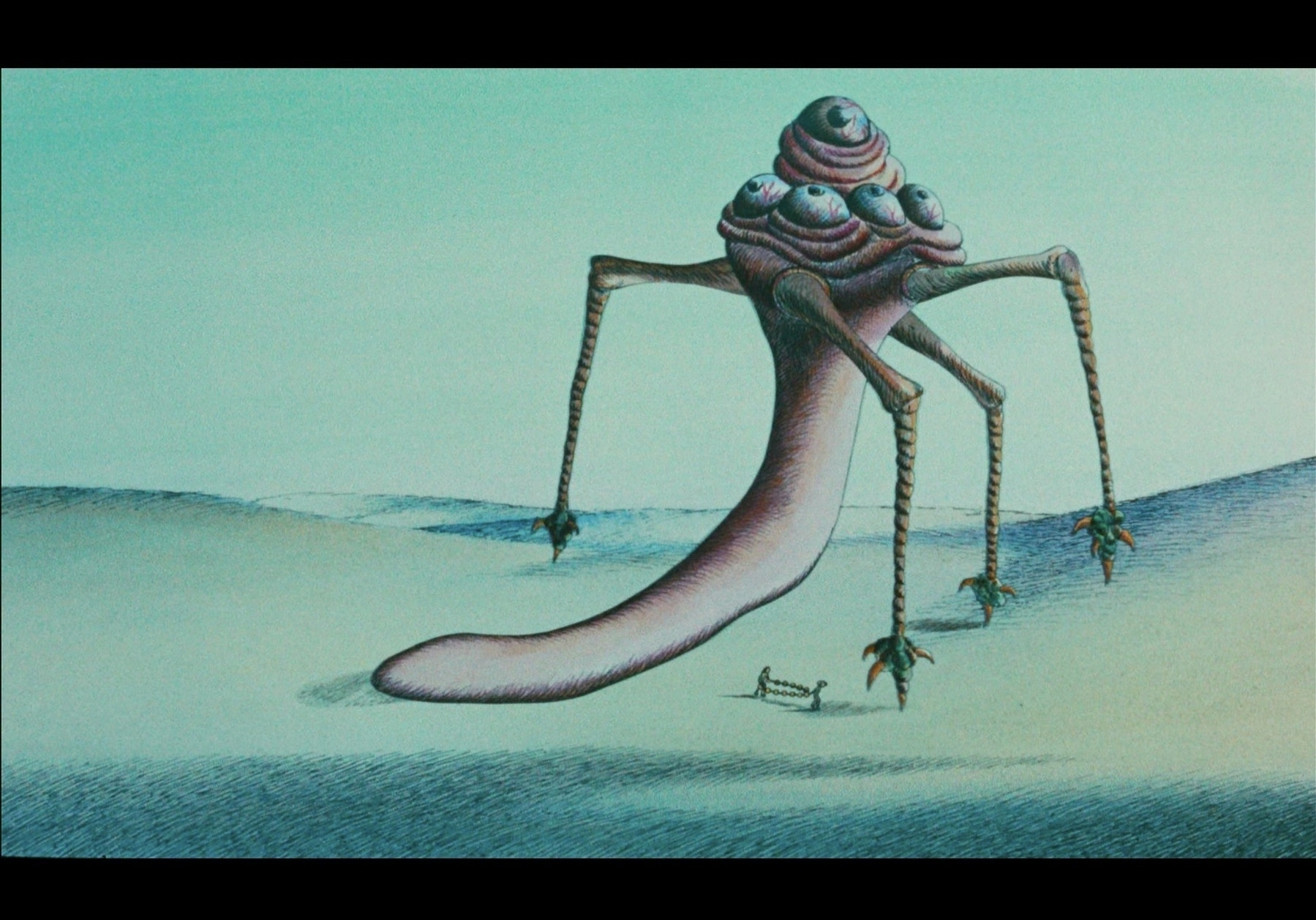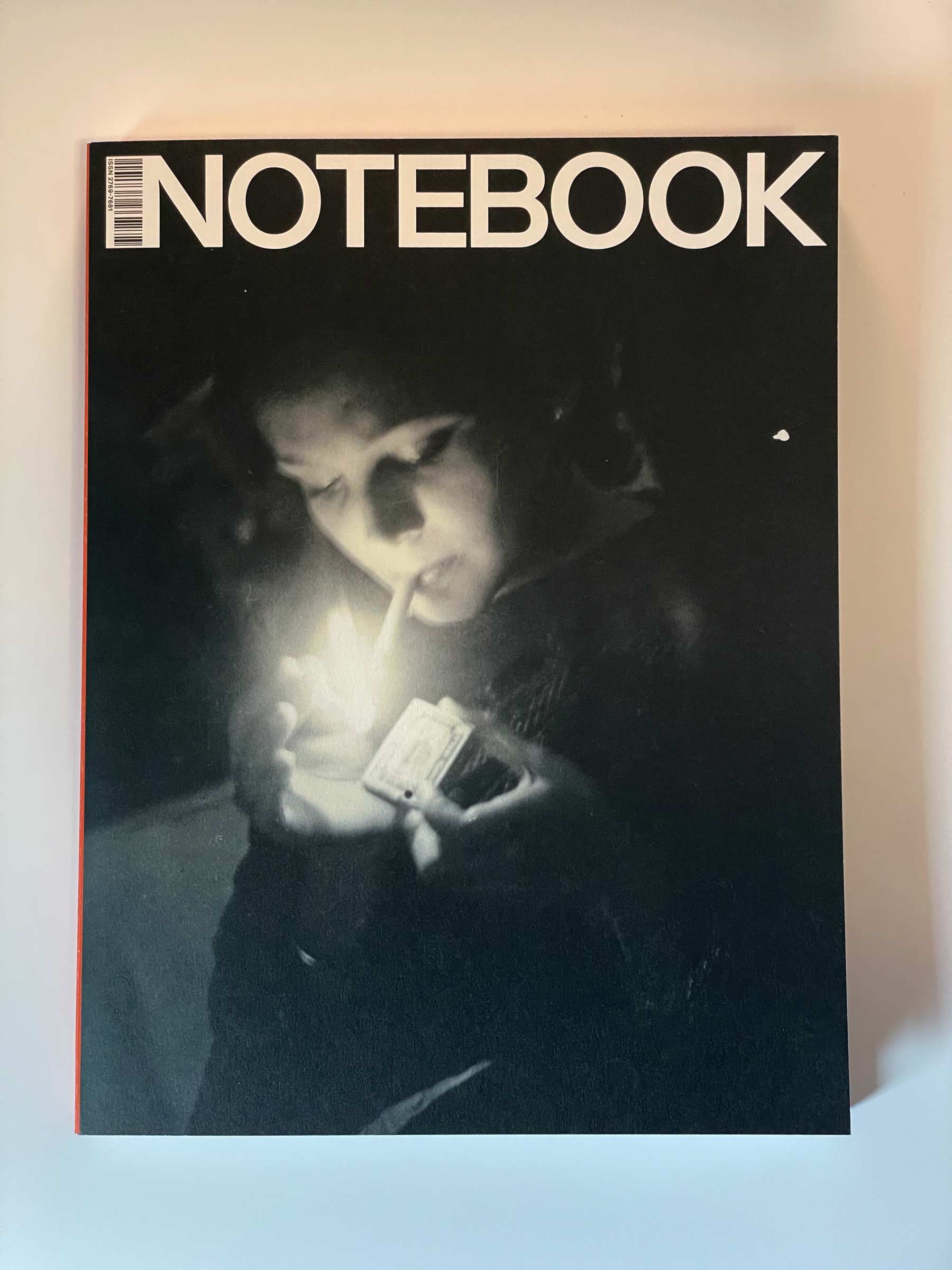When I originally saw the pre-release poster for the documentary Jodorowsky's Dune on a February visit to the Music Box theater in Chicago, I was excited. The prominant visual -- a colorful, wildly insectoid starship design -- immediately captured my interest. The subject matter, paired with a director with whom I've only once been aquainted via Holy Mountain, intrigued me all the more. I didn't even know anyone else had attempted to bring Dune to the big screen, let alone failed. I made a note to see the film in theaters, but alas, didn't get around to seeing it until a few days ago. But even several months post-release, the film satisfied most of my appetite for what it had teased earlier this year.
But let me back up a bit here. First things first: Dune). Written in 1965 by American author Frank Herbet, Dune is often claimed (and probably statistically so) as the world's bestselling science fiction novel. Though I'd retrospectively consider myself fairly well-read in science fiction, I actually did not read Dune growing up. I remember buying a copy of it when I was in high school at the Ridgedale Barnes & Noble, which was my suburban destination for collecting all my books when I lived in Minnesota. I'm sure I bought it alongside a few other novels that, for whatever reason, took precedence. Ever since, it fell by the wayside, traveling with me to college in Chicago, sitting smugly on that black little bookshelf, and subsequently making its way to each and every apartment thereafter. I remember reading through a few chapters on a number of occasions over the years, but kept putting it down in lieu of something else. Perhaps I just didn't want to delve into something I anticipated to be overly complex and challenging, or perhaps it just wasn't the right time. So I kept putting it off.
Until I saw the poster for Jodorowsky's Dune. Why that set me off on scouring through my bookshelf and diving right into the first book (of the canonical six), I'll never quite know, but I tore through it I did. Up to that point, the only exposure I had with Dune was David Lynch's much-derided adaptation from 1984, and this was probably more than fifteen years ago. I saw it with no context and as much as I can remember, it was awful — especially compared to the popcorn sci-fi of Star Wars. The book, however, is turned out to be phenomenal, and as you can imagine, I immediately continued reading through the subsequent books in the series. It's one of those tales that grows better with its sequels, both holistically and individually (yes, I think some of the sequels are better than the first one, which, in retrospect, is really just a prologue to a grander story). My memory tells me that David Lynch's film is a loose, semi-unfaithful adaptation of the book, but I'm definitely going to re-watch it now with more informed context. Knowing the complexities of the book, I see why cinematically adapting it, or its sequels, is a monumental challenge.
All the more reason I came to watch the documentary, Jodorowsky's Dune, with enthusiastic optimism. If there's one guy that actually could pull off the more spiritual, metaphysical elements of the book, it's Alejandro Jodorowsky. A Chilean-French filmmaker and, let's be honest, all-around artist (he acts, he writes, he conducts music, he even produces comics), Jodorowsky is best known for his surreal films El Topo and The Holy Mountain. Like reading Dune, it took me a few tries to get through The Holy Mountain. Surreal is definitely the right way to describe it -- watching that film gives you the impression Jodorowsky never really understood the norms of film language (e.g., how to build cohesive sentences like other filmmakers). Instead, he created experiences to be felt through film -- like the poetry-version of stringing together words. The most similar experience I've had in watching a film in recent years is Jonathan Glazer's Under the Skin (highly recommended, one of the best of 2014), which follows a flowing, experiential pace of visuals and light storytelling. The Holy Mountain moves at a bizarre pace, throwing colorful scenes, characters, and situations for you to mull over for weeks after watching (a footless, handless dwarf, flies covering a face, a man pooping gold, a wax statue sent into the sky with balloons). Fun, memorable stuff.
So again, this is the guy who apparently wanted to tackle science fiction's biggest story. But rather than focusing on the heart of what makes Dune so visceral in the telling, it instead rewards audiences by unexpectedly capturing the beautiful plight of a dedicated artist who loves his craft and has unbridled enthusiam for film. He states early on in the film that he never read Dune before deciding on doing the film (he said a friend told him the book was fantastic and that was all it took -- that would be his next film!). I'm not sure if he actually ended up reading even after he started production on it, but I can say this: he had a propensity to identify an amazing cast of actors, producers, and artists to contribute to the film. Salividor Dali, Orsen Welles, Mick Jagger, H.R. Giger. You can see where this is going.
And as you'd expect, he had high hopes for his version of Dune, regardless of how much or how little it connected to Frank Herbert's original story. After a while, I gave up on caring how far from the original story he drifted and instead just sat back to enjoy the unwavering dedication to his fantasy. In doing so, it's clear that he seems to have captured the spirit of Dune on a visually astounding level. In his own words, he wanted to create "a film that gives LSD hallucinations -- without taking LSD"; after seeing the proof across 3,000 illustrations, storyboards, reference materials, and script snippets, I have no doubt this film would have felt like a jolt of something ethereal. He tasked his carefully curated artists with the creation of ships and landscapes that, while never featured or alluded to in the book, capture a creative depth beyond Herbert's original universe-building. In a sense, this is what every author secretly hopes a cinematic adaptation of his or her novel amounts to: inventively taken in a direction suitable for film. This one in particular was so and so dramatically different from the source material, it would have been like seeing Dune written by another dimension’s Frank Herbert.
But there were some truly remarkable concepts Jodorowsky attempted to pull off in addition to the radical interpretation — things that film enthusiasts will greedily enjoy seeing unfold via storyboards. Take, for instance, the opening sequence that he wanted to achieve: a continuous shot longer than Orson Welles' Touch of Evil sequence; a shot that by the looks of the original storyboard would have been nearly impossible to pull off in the 70s. It's a shot that essentially traverses an entire galaxy, flying by battles, pirate raids on spice transport ships, asteroid fields, eventually leading all the way to a close-up on two figures. Ambitous stuff -- only recently have films attempted to create something like this, and, of course, they rely entirely on computer generated imagery.
While the film is a terrific homage to artistry and the madness that drives it, its commentary on the influence of Jodorowsky's work on the Dune production is presumptuos. Towards the end of the documentary, its creators -- not Jodorowsky -- make bold assertions about the work on Dune influencing nearly everything that followed it, including Star Wars, Flash Gordon, Raiders of the Lost Ark, and Contact. While I'm sure the production book made its rounds in Hollywood, it likely didn't have that great an influence over the visual direction of what we now know as classic blockbuster pictures.And especially the integrity of equally imaginative creators. If anything, it helped ground some of the bolder ideas that folks like George Lucas and Steven Spielberg struggled to convey in those early years of selling their ideas to studios.
As it stands as a documentary and an homage to the filmmaking process, Jodorowsky's Dune is still an exceptional achievement. I have newfound respect for the director as an artist, as well as for the creators of the actual documentary -- the film has great rhythm, and does a fine job bringing old production illustrations to life in attempting to convery the imaginative reaches of Jodorowsky's grandest vision. We can only hope that someone picks up the spiritual torch and shepherds something akin to taking LSD to the big screen in the near future.






